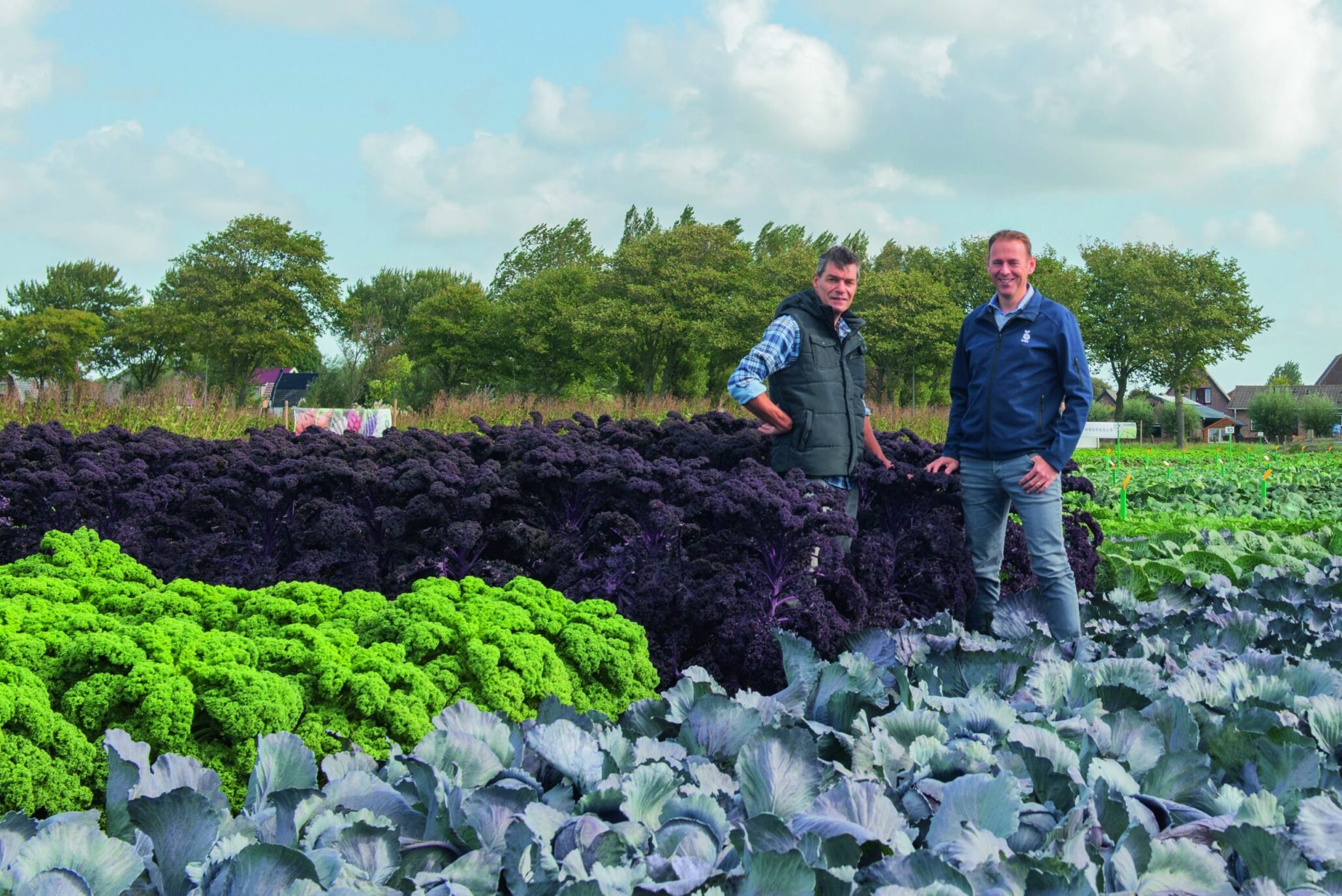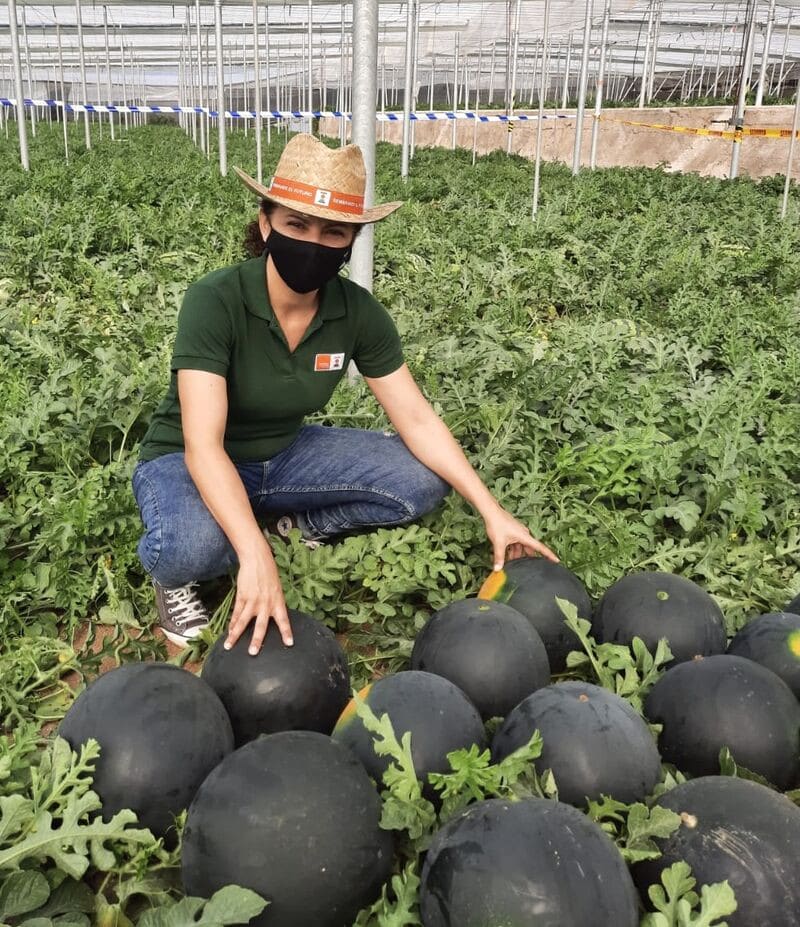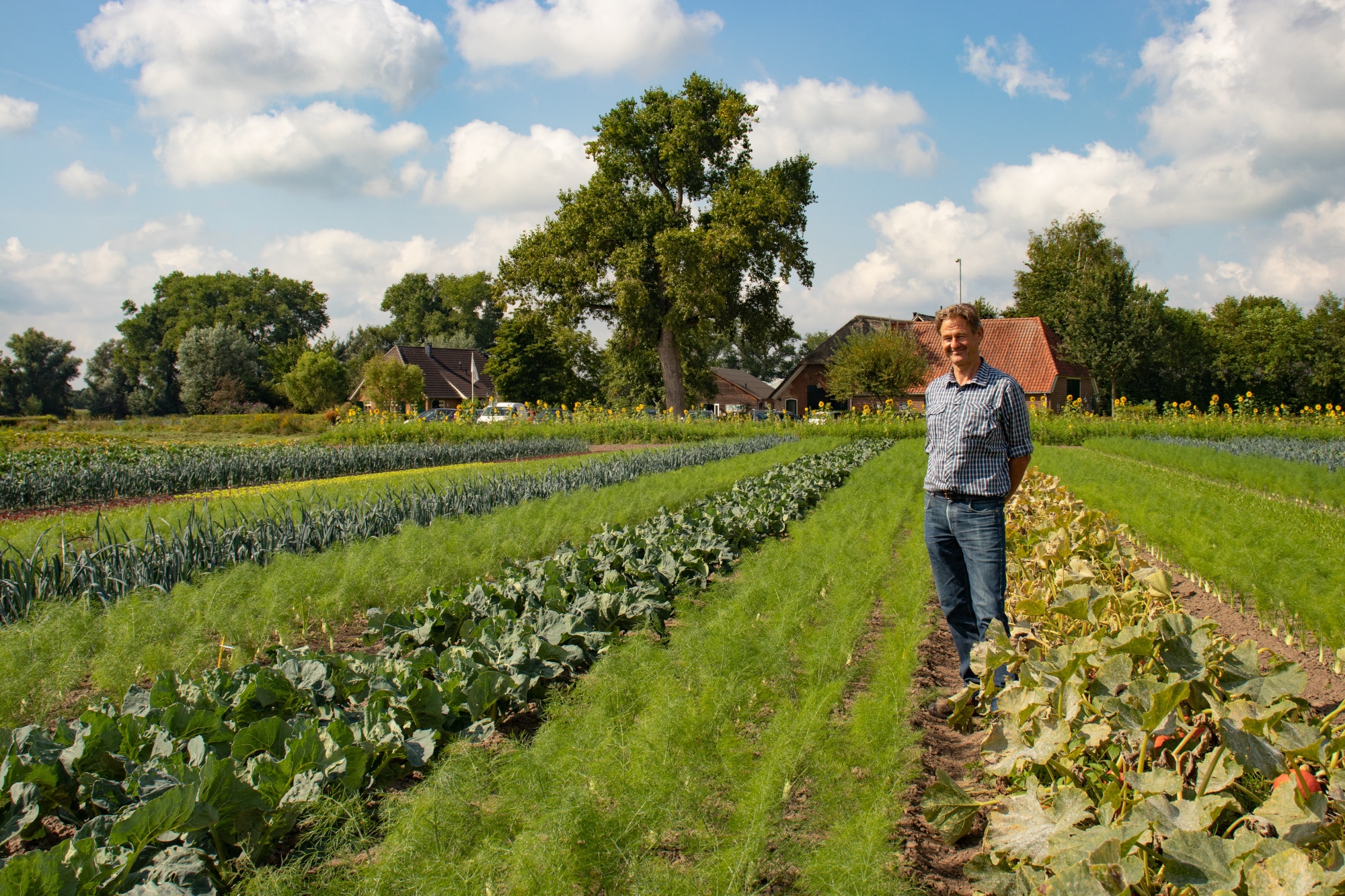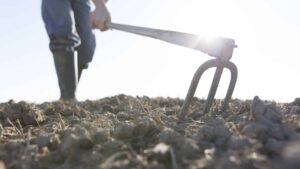How vegetable breeders are handling organics
According to the most recent data, organic farming covered almost 13.8 million hectares of agricultural land in the EU-27 in 2019 (= 8.5 per cent of the total utilised agricultural area), an increase of 0.5 percentage points from 2018. The increase in organic area between 2012 and 2019 was 46 per cent. The EU Green Deal and its Farm to Fork Strategy, aim that by 2030, 25 per cent of agricultural land is under organic farming, a whopping and seemingly impossible increase. To find out how vegetable seed companies are dealing with this ambitious target, European Seed consulted with experts from several vegetable breeding companies. We sat down with Anne Williams, Global Head of Protected Culture for Bayer Vegetable Seeds; Heleen Bos, Account manager organics at Rijk Zwaan; Bram Weijland, Organic program coordinator at Bejo Zaden; Paul Degreef, Head of Business Unit KWS Vegetables B.V., Marcel van Diemen, plant breeder at Vitalis Biologische Zaden BV and Pauline Fargier-Puech, Group Marketing Manager at Gautier Semences. This is part 2 of the story. Part 1 can be found here: https://european-seed.com/2021/11/how-vegetable-breeders-are-handling-organics/
DO ORGANIC BREEDING PROGRAMMES TAKE MORE TIME?
“Under current regulations, our organic plant breeding programmes take the same time, and have the same efficiency and risks compared to conventional,” says Fargier-Puech. Their breeding programmes rely only on traditional breeding technics, by crossing sexually compatible parents. “Our breeders could also count on molecular markers to identify the best plants that have desired traits, and accelerate the varietal selection,” she adds.
Bos states their current approach with breeding for organic really leads us to efficient breeding, and new varieties.
Making a reliable selection is not an easy job. “It is a multiyear job, which has to be done in different environments and under different growing conditions. It is so much more than just harvesting one field; it involves years of selection work,” says van Diemen. Also, disease pressure is an issue of concern.

“Just to give you one example of our organic approach: one of our most important pumpkin varieties is Orange Summer,” says van Diemen. The variety was bred & selected under organic conditions causing the variety to have a very high resilience. It can be grown from South Morocco to mid-Norway, and according to van Diemen is also one of the best tasting varieties. To his knowledge there are no other varieties with such a broad geographical spread, and all because of the organic breeding and selection process.
Weijland states the reason his company chose for ‘breeding for organic’ because that they are using modern breeding techniques to combine the best traits for the farm systems and the market needs of their organic farmers.
Bayer believes its certified organic offering will be highly valued by organic growers; given the strong genetics that help improve productivity and performance around the world. “We apply the same quality standards to both organic and conventional seeds believing that every grower deserves the best seed possible to help their business succeed,” says Williams.
RISKS FOR THE GROWER
Weijland says that farm systems with a high level of mechanization, require uniform plants to control weeds and optimize yield. “In these farm systems there is no place for heterogenous plant varieties (HPV). For these farmers, the answer to achieve a higher level of diversity, would probably lie in the direction of strip cultivation rather than HPV. On the other hand, for other farm systems, e.g., farms that do have a high degree of crop diversity in regions that are vulnerable to climate change, HPV could be part of a solution towards spreading risks on crop losses, caused by fluctuating climate conditions.”
According to van Diemen, heterogeneous plants do not pose a risk, but are a benefit to the grower.
In the breeding process to develop new parent lines of their hybrid varieties, he makes use of heterogeneous material. “We make sure the hybrid is very uniform, and the heterogeneity of the parent lines give the hybrid more resilience,” he says.
Fargier-Puech believes we need to remember that European regulations on seeds, rely on the description and distinction of varieties that are stable over time to secure commercial transactions. “Uniformity is not an end, but it allows producers to guarantee over time to have the same plant qualities and characteristics,” she says. She adds that genetic diversity can play an essential role in a sustainable agriculture model, contributing to adaptability and resilience to stress in low input systems. “Genetic diversity is expected to produce regularity and adaptability to fluctuating conditions and different environments. For example, more adaptability to changing climatic conditions, drought etc. Also, the genes which confer pest resistances depending on genetic traits, are often bypassed as soon as they are deployed over an important growing area. Heterogeneity could increase the durability of resistance and extend the use of these varieties.”
“To decrease the risks of pathogens, farmers should consider intercropping and strip cropping,” says van Diemen. In terms of intercropping, most people are familiar with the famous example of the beneficial effect of planting carrots and onions together. “In our fields, we see that if you plant cauliflower next to pumpkin, that the long roots of the pumpkin plants stretch out and surround the cauliflower root system, and this provides a beneficial effect on the cauliflower. So, in our breeding programs, we also pay attention whether these new cauliflower and pumpkin varieties can grow well together,” says van Diemen.
With strip cropping, the farmer plants several different crops in broad strips, which are alternated in crop rotation. Van Diemen shares that with strip cropping, pathogens move much slower through the crop, compared to monoculture, so there is less disease pressure. And this in turn leads to a higher diversity in birds & insects,” he underlines.
Van Diemen is convinced that both intercropping and strip cropping will see very strong future developments. “But you can only do it if you approach it in a holistic way where you change the whole system, which includes not only the crop, but also the soil, the surrounding plants etc. You need to think of a new agricultural system, and this is what the world needs,” he adds.
INVESTMENT DECISIONS
Gautier Semences tries to consider the expectations of producers, retailers and consumers at the same time. “About consumers, each year we set up several consumption studies to better understand the purchasing habits of consumers and what criteria are important for them such as taste, shelf life, nutrient contents, innovation, convenience, etc,” says Fargier-Puech, adding they are very attentive to verify that their new varieties will be appreciated. “For that, we test our varieties with experts and a panel of consumers.”
Seed companies are directed by farmer’s needs says Weijland. “Farmers’ wishes are, from their position in the chain, driven by wholesaler and consumer preferences. Therefore, seed company needs are indirectly consumer driven which is then translated in their request for new varieties,” he says.

Bos states that for her company, both consumers, retailers and growers’ interests are important. “For us it is always about the whole value chain of vegetable production, from seed till plate.”
Degreef concurs that investment decisions are strongly influenced by farmers- and supply chain needs. “But we’re seeing already for quite some years that consumer traits of the product, like taste or structure and variation in the products, do get more and more attention. This is also true for organically produced vegetables,” he adds.
SUITABILITY OF HETEROGENEOUS VARIETIES
Weijland mentions that likely heterogenous varieties are best suitable for those situations where the grower has little to no control over biotic or abiotic stress. “But one should realize that outside of Europe the majority of crop lands in the world can be classified as having sub-optimal growing conditions, often situated in areas with a high climate change vulnerability, using lands with a high level of erosion pressure and strong fluctuating soil fertility,” he says. For this majority, often small-scale farmers, any measure that helps strengthening the farm system resilience, which at the same time is reducing climate change vulnerability, is welcome. “For those farmers certainly heterogeneous plant material could be part of the solution.”
Van Diemen indicates that looking at resistances in their lettuce program, they don’t work only on the High Resistance (HR) levels against downy mildew (Bremia) but have also developed varieties with an intermediate resistance. “These varieties show a level of tolerance to the pathogen. And we see that the plant and the pathogen are, in a way, working together. The pathogen is on the plant in and the farmer still has a harvestable crop,” he says.
Bos states that a high level of uniformity would make a variety very suitable for organic farming because it would be easier to carry out mechanised weed control, lead to a reduced time for harvest & packaging and result in reduced CO2 emissions. “Professional organic growers have the same needs as conventional growers, regarding those topics,” Bos says.
Weijland concurs and adds this is correct for large scale organic farms with a high production potential and high level of mechanization. “For these farms, an approach of sustainable intensification* to reduce environment and climate impact should be preferred. At a worldwide scale, with a vast majority of small-scale farmers, this could be viewed differently,” he says.
PESTICIDES IN ORGANIC PRODUCTION
Bos mentions that through breeding, her company aims to develop resistant vegetable varieties, better integrated pest management, and ultimately, less chemicals are needed. And this is the case, both for conventional as well as organic growing.
According to Weijland, there is a difference in impact between the synthetic pesticides foreign to the environment and natural substances used as pesticides. “However, even the latter should be wisely used especially when it concerns generic, undiscriminating substances which are also harmful to beneficial organisms,” he adds.
“A global and reasoned approach must be the key word for sustainable agriculture,” says Fargier-Puech. She states that to preserve a well-balanced practice, growers could combine variety resistances, biocontrol solutions and agronomic techniques such as crop rotation.
For Weijland it would not be necessary to make testing for pesticide residues on organic products mandatory in the EU. “But the precautionary principle should rule. The basic understanding behind this is that a process-based certification is preferred above a product-based certification. The reason for this is that contamination with conventional substances is not always avoidable and may affect the product but not the process,” he adds.
SHORTAGE OF ORGANIC SEED
Fargier-Puech doesn’t think that continuously allowing the use of untreated non-organic seeds would result in higher use of organic seed. “Today the organic seed use is still very limited in some countries because of the authorization of untreated seeds. If we want to develop the use of organic seeds to be in coherence with organic production principles, we need to encourage organic seed use,” she underlines.
Weijland concurs and adds that the continued and unguided allowance of conventional seed use will jeopardize the introduction of organic seed. “Already for a long-time organic seed has to compete with the cheaper conventional seed. What the organic industry needs are clear targets and controls to stimulate the production and use of organic seed,” he says.
*Sustainable intensification is a strategy to reduce/minimize negative impact of agriculture by means of increasing production and efficiency from existing agri-land.













